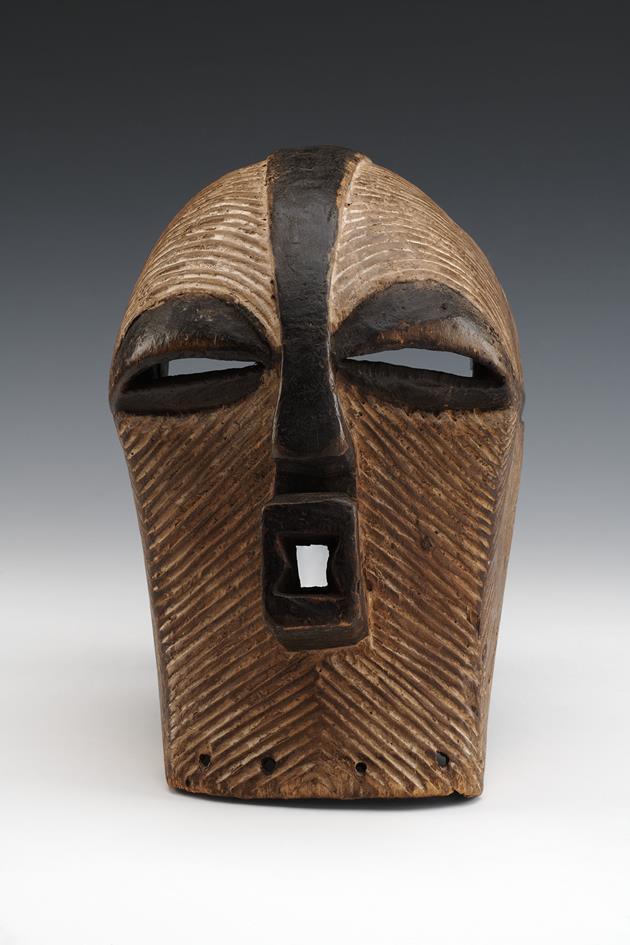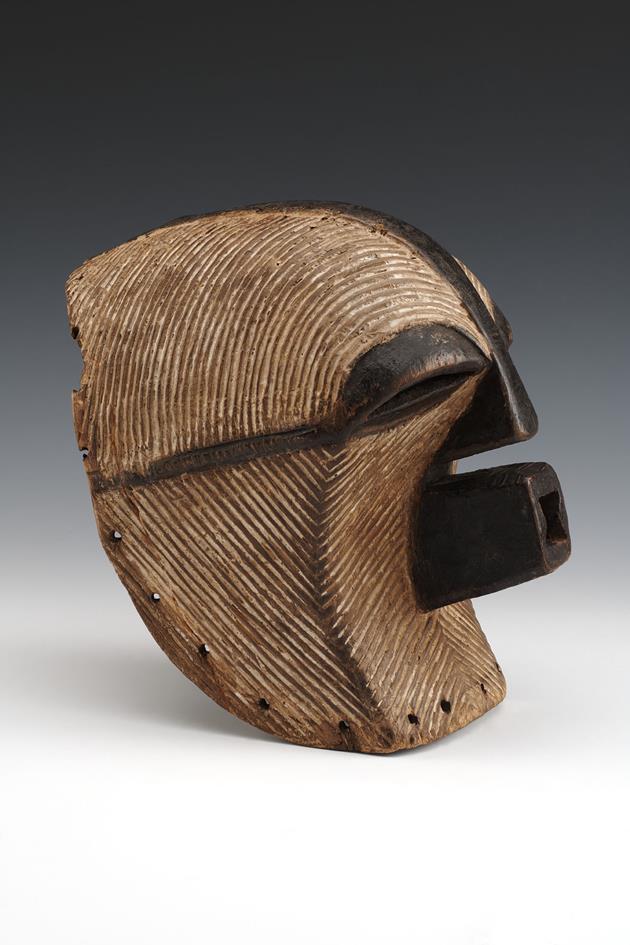Female Kifwebe Mask
20th century
Creating a face that stands above the normal order of human and animal identity, the Songye established a distinctive style of mask. Strong geometric form guides each volume: squared mouth and jaw, domed forehead and half circles at the eyes. These forms are accented by fine linear striations that mimic those of various animals such as the striped porcupine, the zebra, the forest antelope and certain snakes. Using a face that combined a multitude of references, the masquerader was thought to be able to activate forces beyond human control. Such masks represent the force of a policing society, appearing when needed to neutralize threats to the ruling elite.
For many years, a large number of the most dramatic Kifwebe masks were deemed products of the early tourist market. A related mask from the Luba, also in the museum’s collection (81.17.869), is continually cited as one of the few fully authenticated examples that was accompanied by a field photograph from the end of the 19th century. However, Belgian archives have also revealed a 1934 photograph taken by a Father Teenstra that illustrate a large group of 50 masked dancers of this type in full costume.
Wood, pigment
10 x 9 x 7 in. (25.4 x 22.9 x 17.8 cm)
Gift of Dr. Oliver E. and Pamela F. Cobb, in honor of the 75th Anniversary of the Seattle Art Museum
2004.107
Photo: Scott Leen


